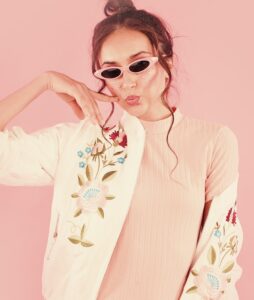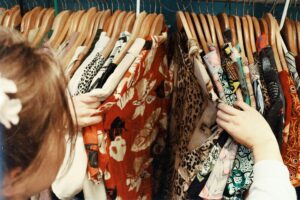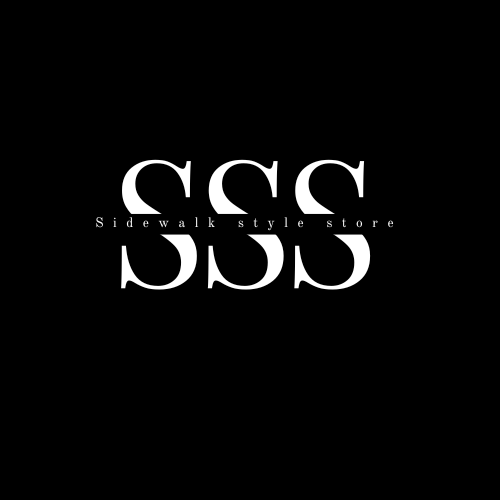Fashion Trend Forecasts
Fashion trend forecasting is like peering into a crystal ball for the fashion industry. It’s the meticulous process of analyzing everything from runway shows and street styles to cultural movements and social media trends to predict the next big thing in FAD. Trend forecasters sift through this avalanche of information, looking for patterns and commonalities that hint at what colors, styles, fabrics, and themes will dominate the fashion landscape in upcoming seasons.
predict the next big thing in FAD. Trend forecasters sift through this avalanche of information, looking for patterns and commonalities that hint at what colors, styles, fabrics, and themes will dominate the fashion landscape in upcoming seasons.
It’s not just about spotting a cool dress or a unique jacket; it’s about understanding the societal, cultural, and economic currents that influence what people will want to wear. Forecasters then translate their insights into reports, mood boards, and visual representations that serve as a roadmap for designers, retailers, and marketers. These insights help designers create collections that resonate with consumers, while retailers can plan their inventory based on anticipated demand. As the seasons unfold, trend forecasters continually validate and refine their predictions, ensuring they stay ahead of the curve in an ever-evolving industry.
Forecasting fashion trends can be an exciting and informative aspect of a fashion blog. Here’s how you might approach it:
1. Research and Analysis:
- Runway Reports: Follow major fashion weeks and analyze collections from top designers to identify recurring themes, colors, silhouettes, and materials.
- Street Style Observations: Monitor street style during fashion weeks and in trendy neighborhoods to spot emerging styles and preferences.
- Social Media Monitoring: Track influencers, fashion bloggers, and brands on platforms like Instagram, TikTok, and Pinterest for emerging trends.
2. Trend Identification:
- Color Palettes: Highlight projected color schemes for the upcoming season, discussing the psychology behind these choices and how they’re likely to be incorporated into FAD.
- Key Silhouettes and Styles: Identify prevalent cuts, shapes, and styles in clothing, accessories, and footwear that are gaining traction.
- Fabric and Texture Trends: Discuss upcoming materials and textures that are expected to be popular, such as sustainability-focused fabrics or unique textures.
3. Contextual Analysis:
- Cultural and Social Influences: Discuss how societal shifts, cultural events, or global movements influence fashion trends.
- Tech and FAD Integration: Explore how technology advancements are impacting FAD, such as in wearable tech, sustainable manufacturing, or innovative design techniques.
4. Visual Representation:
- Mood Boards and Visual Guides: Create mood boards or visual collages showcasing the forecasted trends, providing a visual reference for your audience.
- Styled Looks: Curate outfit ideas incorporating these forecasted trends, demonstrating how they can be translated into wearable styles.
5. Engage with the Audience:
- Interactive Polls and Surveys: Engage your audience by conducting polls or surveys to gauge their interest in upcoming trends.
- Ask for Feedback: Encourage discussions and feedback on forecasted trends, inviting your audience to share their thoughts and opinions.
6. Educational Content:
- Explainer Articles: Offer in-depth explanations on the history or cultural significance behind emerging trends.
- Styling Tips and Guides: Provide styling tips and suggestions on how to incorporate these forecasted trends into everyday wear.
7. Regular Updates:
- Seasonal or Monthly Updates: Provide regular updates on forecasted trends, keeping your audience informed about evolving fashion preferences.Remember, while forecasting trends, it’s essential to maintain authenticity and offer unique
- insights that resonate with your audience’s preferences and your personal FAD expertise.
Trending fashion
Fashion trends are constantly evolving, influenced by a variety of factors such as cultural shifts, societal changes, technological advancements, and the creative expressions of designers. As of my last update in early 2022,
technological advancements, and the creative expressions of designers. As of my last update in early 2022,
1. Sustainability in Fashion:
- Upcycling and Thrifting: Embracing second-hand shopping and repurposing clothes.
- Eco-friendly Materials: Growing interest in sustainable fabrics like organic cotton, hemp, and recycled materials.
2. Athleisure and Comfort Wear:
- Hybrid Styles: Blending athletic wear with casual and formal clothing.
- Loungewear: Elevated loungewear pieces suitable for both home and outside activities.
3. Gender-Neutral Fashion:
- Gender-Fluid Clothing: Designs that blur traditional gender lines and offer versatile options for all genders.
4. Bold Colors and Prints:
- Vibrant Hues: Bright and lively colors making a statement in clothing.
- Abstract and Graphic Prints: Bold patterns and prints adding flair to outfits.
5. Oversized Silhouettes:
- Baggy Fits: Relaxed and oversized silhouettes in clothing, including wide-leg pants and oversized blazers.
6. Retro and Nostalgic Styles:
- Y2K Revival: Resurgence of styles reminiscent of the early 2000s.
- Vintage-Inspired Looks: Embracing elements from various past decades, like ’70s boho or ’90s grunge.
7. Tech-Integrated Fashion:
- Wearable Tech: Integration of technology in clothing, such as smart fabrics and functional accessories.
8. Elevated Basics:
- Classic with a Twist: Reworking wardrobe staples with unique details or innovative designs.
- Statement Accessories: Elevating simple outfits with bold accessories.
9. Sustainability Advocacy:
- Transparent Supply Chains: Consumers demanding more transparency and ethical practices from brands.
- Activism Through Fashion: Brands advocating for social and environmental causes.
Fashion trends can vary widely based on personal preferences, geographical locations, and individual style choices. What’s “trending” can change rapidly, so staying updated with current events, social media influencers, and fashion publications can provide real-time insights into the latest fashion movements.
What is fashion fashion cycles
Fashion cycles are like the heartbeat of the industry, constantly pulsating with the emergence, rise, saturation, and eventual decline of trends. They depict the cyclical nature of styles, where what’s old becomes new again. It all begins with innovation and introduction, as designers and influencers unveil novel concepts, setting the stage for new trends. These styles gain momentum, capturing attention through media coverage and endorsements by key figures, eventually reaching a peak where they become ubiquitous. Yet, this ubiquity often leads to saturation and, consequently, a decline in their allure. Consumers start seeking novelty, driving the shift towards fresh styles, pushing the once-popular trends into obscurity.Factors like cultural shifts, historical references, technological advancements, and consumer behaviors choreograph these cycles. The ’90s grunge resurfaces, vintage aesthetics find contemporary expressions, and athletic wear becomes a lifestyle statement—all part of the cyclical nature of fashion. Understanding these cycles isn’t just about recognizing trends; it’s about predicting consumer preferences and staying ahead in an industry where reinvention is the norm.
and eventual decline of trends. They depict the cyclical nature of styles, where what’s old becomes new again. It all begins with innovation and introduction, as designers and influencers unveil novel concepts, setting the stage for new trends. These styles gain momentum, capturing attention through media coverage and endorsements by key figures, eventually reaching a peak where they become ubiquitous. Yet, this ubiquity often leads to saturation and, consequently, a decline in their allure. Consumers start seeking novelty, driving the shift towards fresh styles, pushing the once-popular trends into obscurity.Factors like cultural shifts, historical references, technological advancements, and consumer behaviors choreograph these cycles. The ’90s grunge resurfaces, vintage aesthetics find contemporary expressions, and athletic wear becomes a lifestyle statement—all part of the cyclical nature of fashion. Understanding these cycles isn’t just about recognizing trends; it’s about predicting consumer preferences and staying ahead in an industry where reinvention is the norm.
Phases of Fashion Cycles:
- Introduction or Emergence:
- Innovative Styles: New designs, concepts, or trends are introduced by designers or influencers.
- Early Adoption: Fashion-forward individuals or early adopters start showcasing these emerging styles.
- Rise to Popularity:
- Mass Adoption: Trends gain traction and popularity, becoming more widely accepted and available in the market.
- Media and Influencer Attention: Endorsement by celebrities and media coverage accelerates their visibility.
- Saturation and Ubiquity:
- Market Saturation: Trends become commonplace as they reach a peak in popularity.
- Overexposure: Overuse or excessive replication of the trend leads to its saturation in the market.
- Decline and Obsolescence:
- Decreasing Appeal: Consumers start seeking something new or different, causing the trend to lose its appeal.
- Shift to New Trends: Fashion moves on to newer styles, pushing the previous trend into obsolescence.
Factors Influencing Fashion Cycles:
Fashion cycles, the ebb and flow of trends within the industry, are influenced by various interconnected factors:
- Cultural Shifts and Societal Influences:Cultural Movements: Changes in art, music, film, and social movements influence fashion choices.Social and Political Climate: Shifts in societal values, gender norms, and political events impact style preferences.
- Historical References and Nostalgia:Retro Revival: Revisiting past eras and reinterpreting their styles for contemporary fashion.Nostalgia: Sentimental attachments to specific periods leading to their revival in fashion.
- Technology and Innovation:Material Innovation: Advancements in fabrics, sustainable materials, or wearable technology influence new trends.Digital Influence: Social media, online platforms, and digital advancements shape the speed and dissemination of trends.
- Economic Factors and Industry Dynamics:Fashion Weeks and Runways: Designers and brands set trends during fashion weeks, influencing industry directions.Consumer Spending Power: Economic conditions affect purchasing behaviors and fashion preferences.
- Seasonal Influences and Industry Players:Climate and Seasonality: Seasonal changes influence the introduction and popularity of certain styles.Influencers and Celebrities: Endorsement by influential figures drives trend adoption and visibility.
- Consumer Behavior and Preferences:Demand and Supply: Consumer demand shapes what brands produce and promote.Individual Expression: Personal taste, individuality, and the desire for self-expression influence style choices.
- Globalization and Cross-Cultural Influences:Global Connectivity: Trends transcend borders due to globalization, impacting global fashion choice. Cross-Cultural Fusion: Blending elements from diverse cultures into fashion styles.
- Sustainability and Ethical Concerns:Shift towards Sustainability: Growing consumer awareness and demand for eco-friendly style impact trends.Ethical Considerations: Increasing focus on ethical practices and transparency within the industry.
- Cultural Shifts: Changes in societal values, lifestyles, and cultural influences impact the direction of fashion.
- Historical Revival: Revisiting past eras and reinterpreting their styles for contemporary FAD.
- Technology and Innovation: Advancements in materials, production techniques, or wearable tech influence new trends.
- Seasonal Influences: Seasonal changes and fashion weeks often drive the introduction and adoption of new styles.
- Consumer Behavior: Consumer preferences, tastes, and purchasing habits shape the ebb and flow of fashion cycles.
Examples of Fashion Cycles:
- ’90s Revival: Resurgence of ’90s fashion trends like baggy jeans, crop tops, and grunge aesthetics in recent years.
- Vintage Styles: Periodic reemergence of vintage or retro styles from the ’70s, ’80s, or earlier decades with modern adaptations.
- Athleisure Boom: The integration of sporty elements into everyday wear, evolving from a trend into a lifestyle choice.
- Inspiration: Revisiting the vibrant and eclectic styles of past decades with modern adaptations.
- Key Trends: Slip dresses, chokers, plaid prints, and grunge-inspired style making a comeback.
- Influence: Nostalgia-driven revival from the iconic era of minimalism and edgy streetwear.
- Evolution: Athletic wear transcending gyms, featuring yoga pants, sneakers, and sporty influences as everyday wear.
- Adaptation: Integration of comfort and functionality into high-FAD and daily outfits.
Conclusion
Fashion cycles are the rhythmic pulses within the ever-evolving realm of style, embodying the fascinating phenomenon where trends resurface, evolve, and eventually circle back, often with a contemporary twist. These cycles serve as an intricate dance between the past, present, and future of FAD, showcasing the industry’s ability to reimagine, reinterpret, and reinvent aesthetics from different eras.
cycles serve as an intricate dance between the past, present, and future of FAD, showcasing the industry’s ability to reimagine, reinterpret, and reinvent aesthetics from different eras.
At the heart of fashion cycles lies a captivating narrative of nostalgia and innovation, where trends from previous decades re-emerge, capturing the zeitgeist of the moment while drawing inspiration from history. The resurgence of ’90s grunge, the periodic nods to vintage aesthetics, and the perpetual evolution of denim styles are emblematic of this cyclical journey.
Yet, these cycles aren’t mere repetitions; they’re reflections of societal changes, cultural influences, and technological advancements. They echo the human desire for both novelty and familiarity, embracing innovation while paying homage to the timeless classics. The cyclical nature of FAD is a canvas on which the fusion of history and modernity, tradition and reinvention, are artfully painted.
These recurring cycles serve as guiding stars for designers, retailers, and consumers alike. They offer a roadmap of inspiration, a treasure trove of ideas, and a kaleidoscope of possibilities. Designers find inspiration in past eras, reviving and reshaping iconic styles to resonate with contemporary sensibilities. Consumers embrace these cycles, finding comfort in the familiar while eagerly exploring the new.
The ebb and flow of fashion cycles manifest in diverse ways. They encompass the revival of retro aesthetics, the fusion of high and low FAD, and the oscillation between minimalism and maximalism. They illustrate the FAD industry’s adaptability, its ability to evolve while maintaining a connection to heritage.
Understanding these cycles illuminates the interconnectedness of culture, history, and consumer behavior. It reveals how societal shifts, cultural movements, and technological innovations intertwine to shape the ever-shifting landscape of style. The fusion of art, technology, and commerce becomes evident as fashion cycles mirror the spirit of their times.
In this continuum, style becomes a narrative—an ever-evolving story of expression, identity, and creativity. It speaks volumes about the human experience, reflecting our values, aspirations, and societal transformations. Fashion cycles weave a tapestry of trends, where each thread tells a story, each trend a chapter in the ongoing saga of style.
As the pendulum swings between eras, trends, and inspirations, style cycles remind us that the beauty of style lies not just in its novelty but in its cyclical nature—a constant evolution, a perpetual reinvention, and an endless journey through time.
